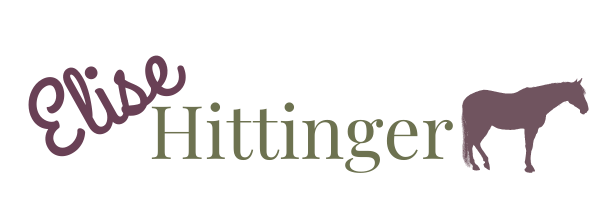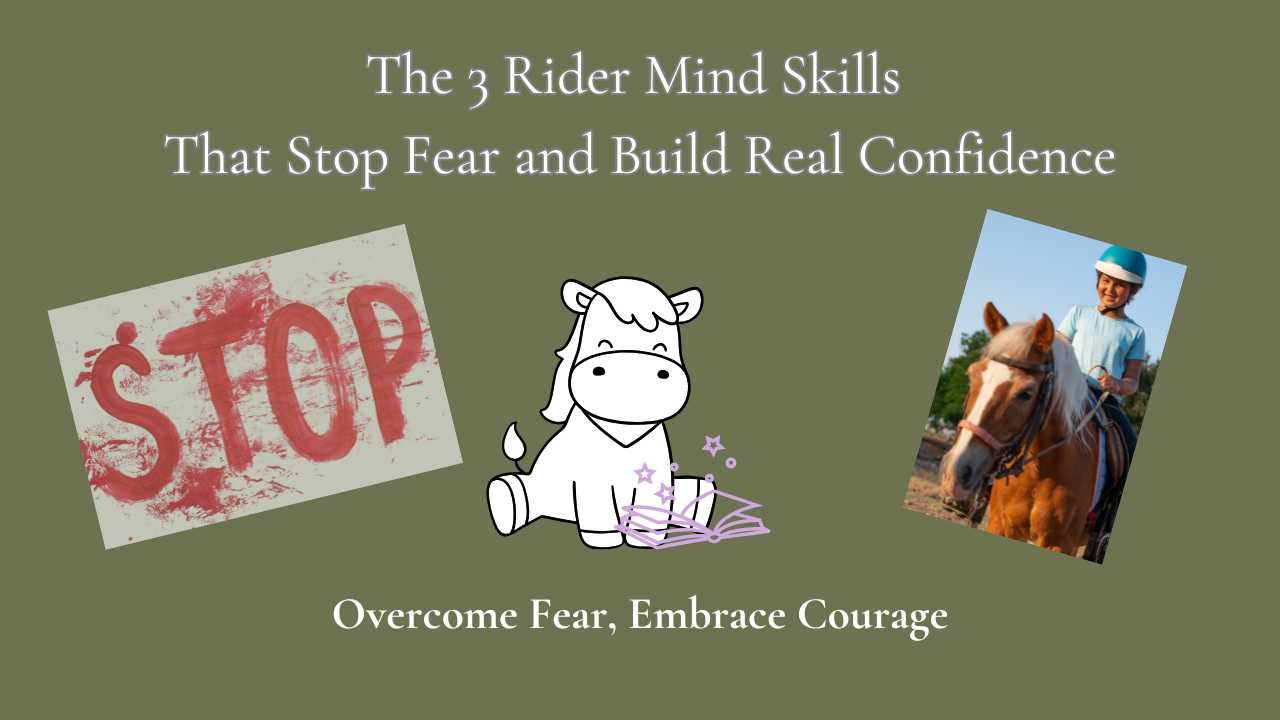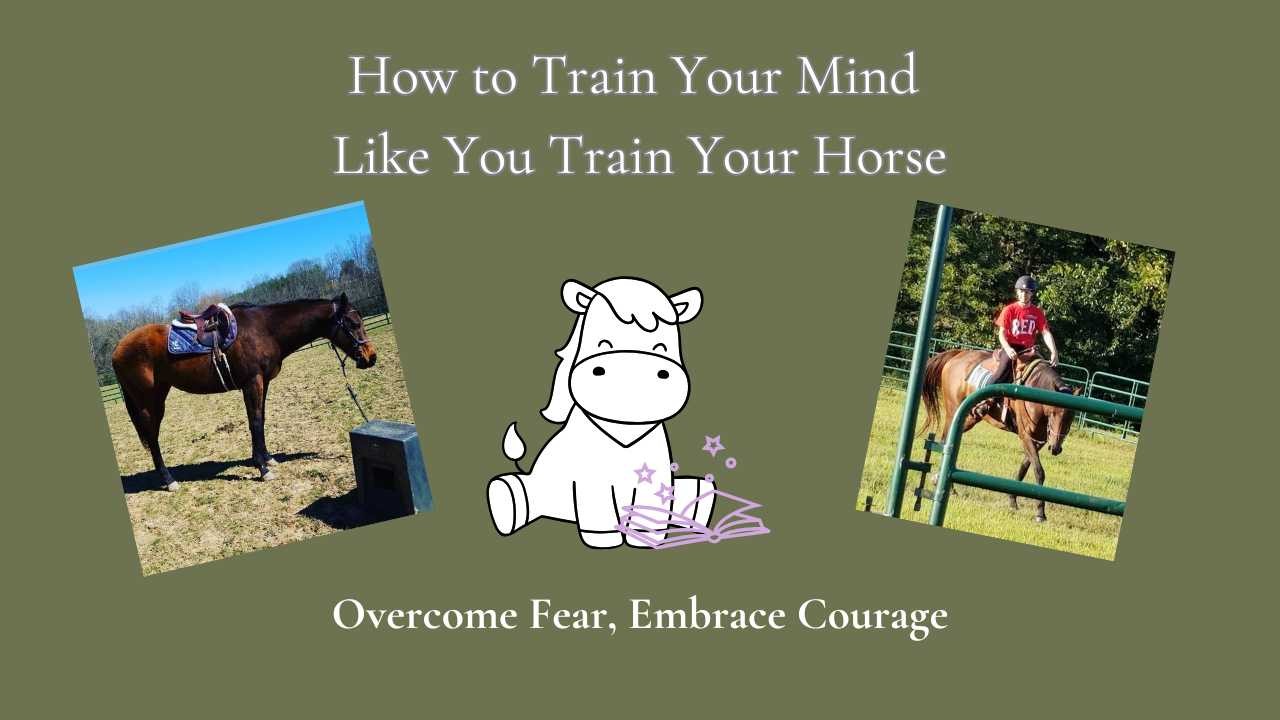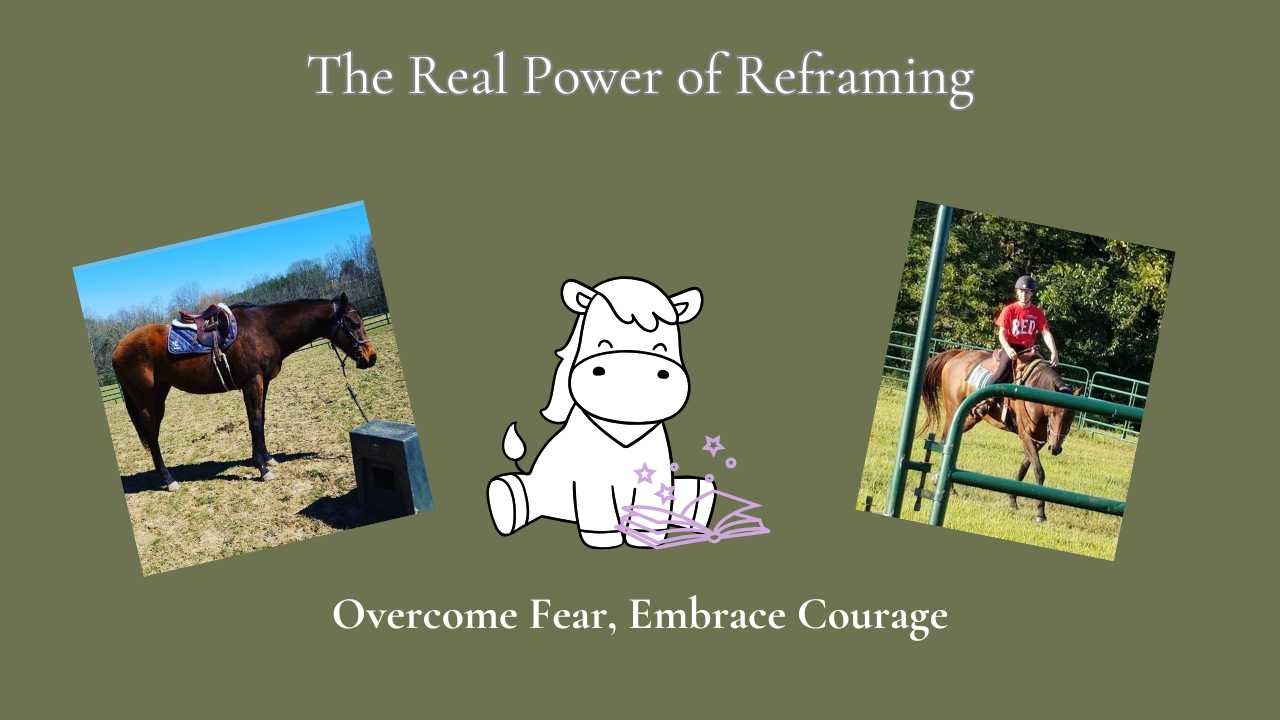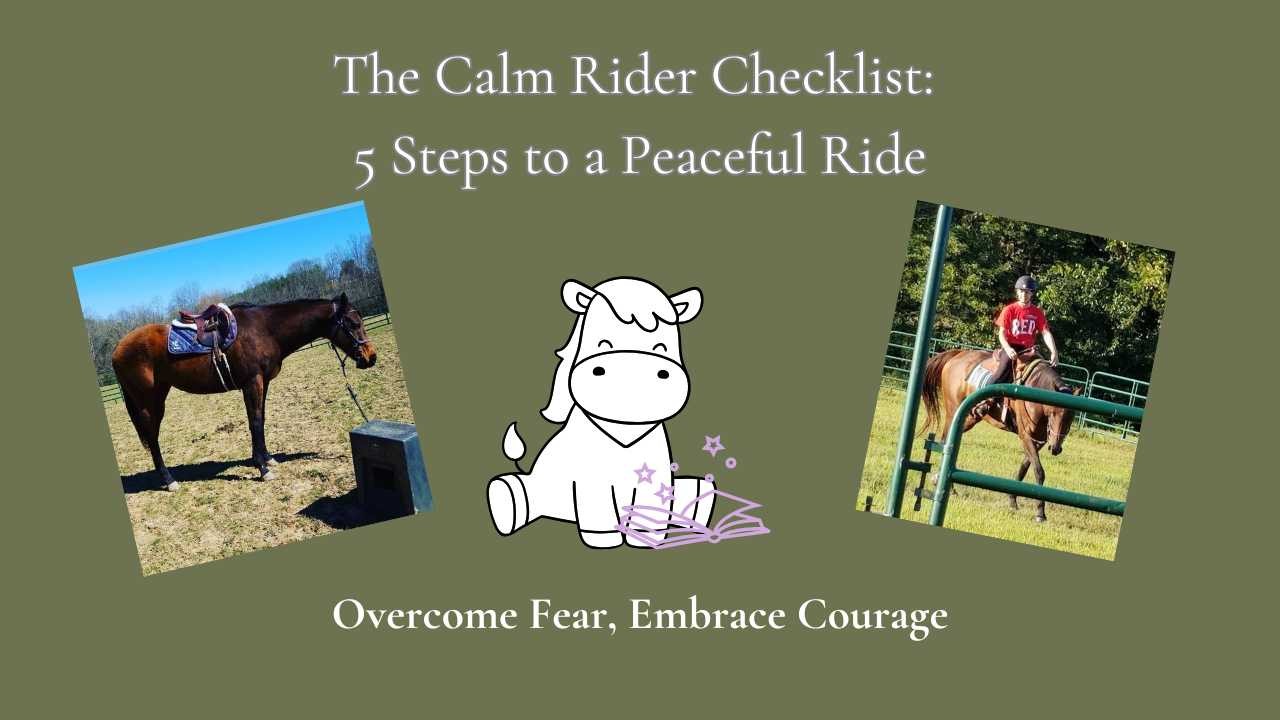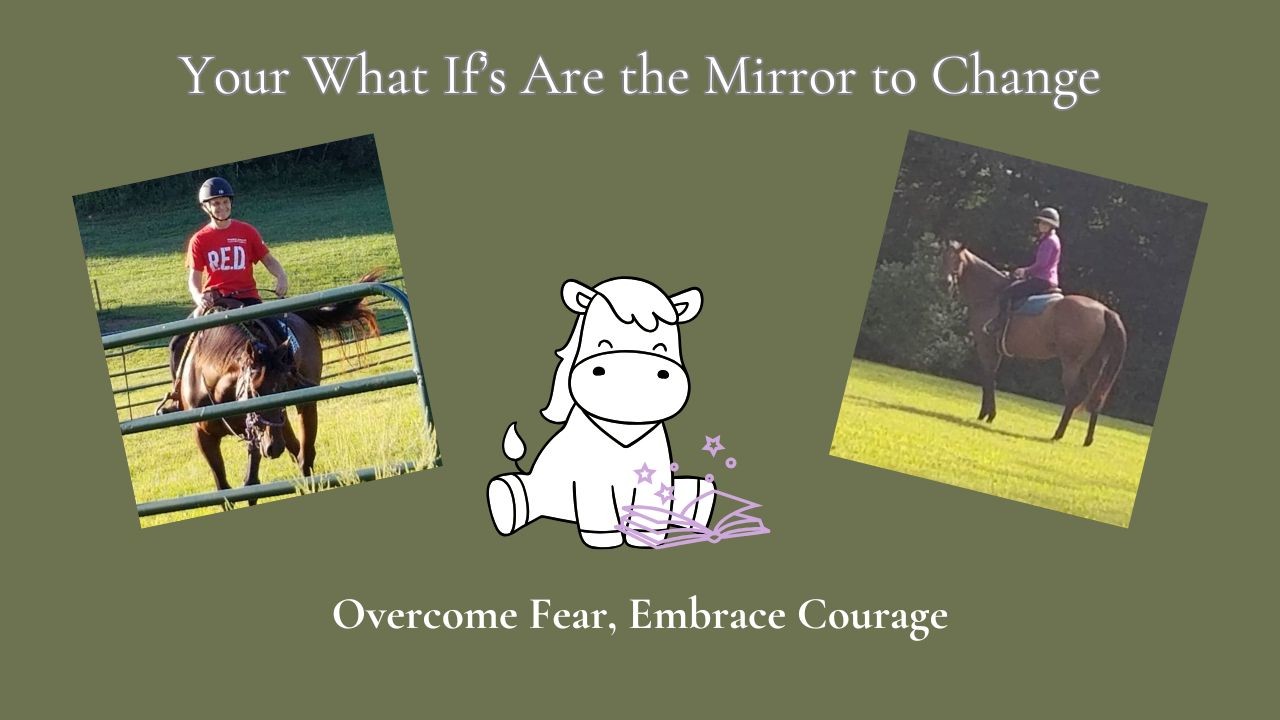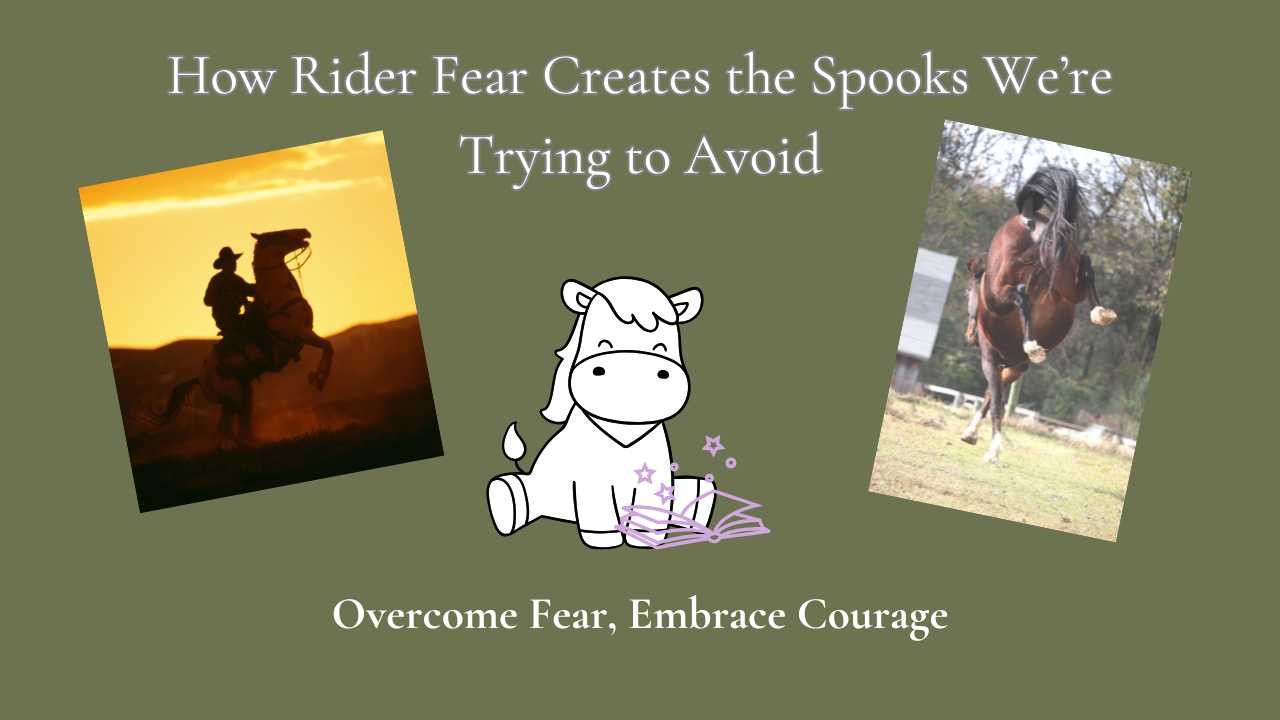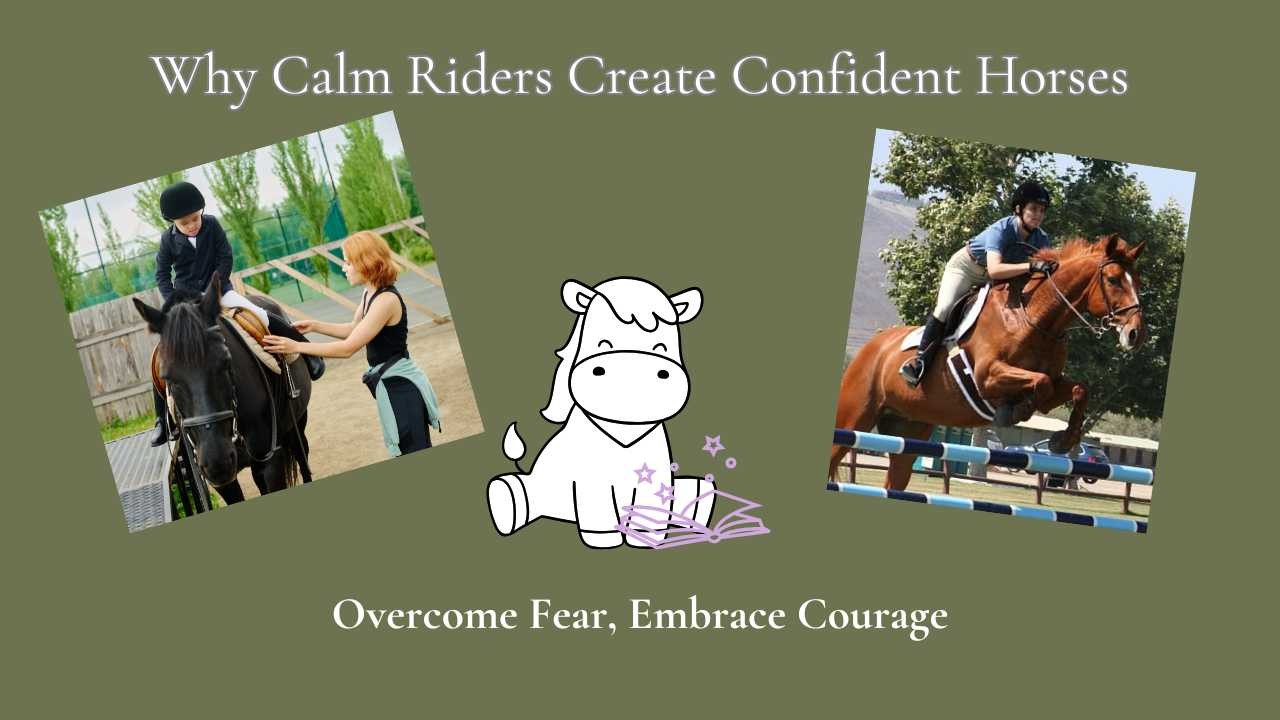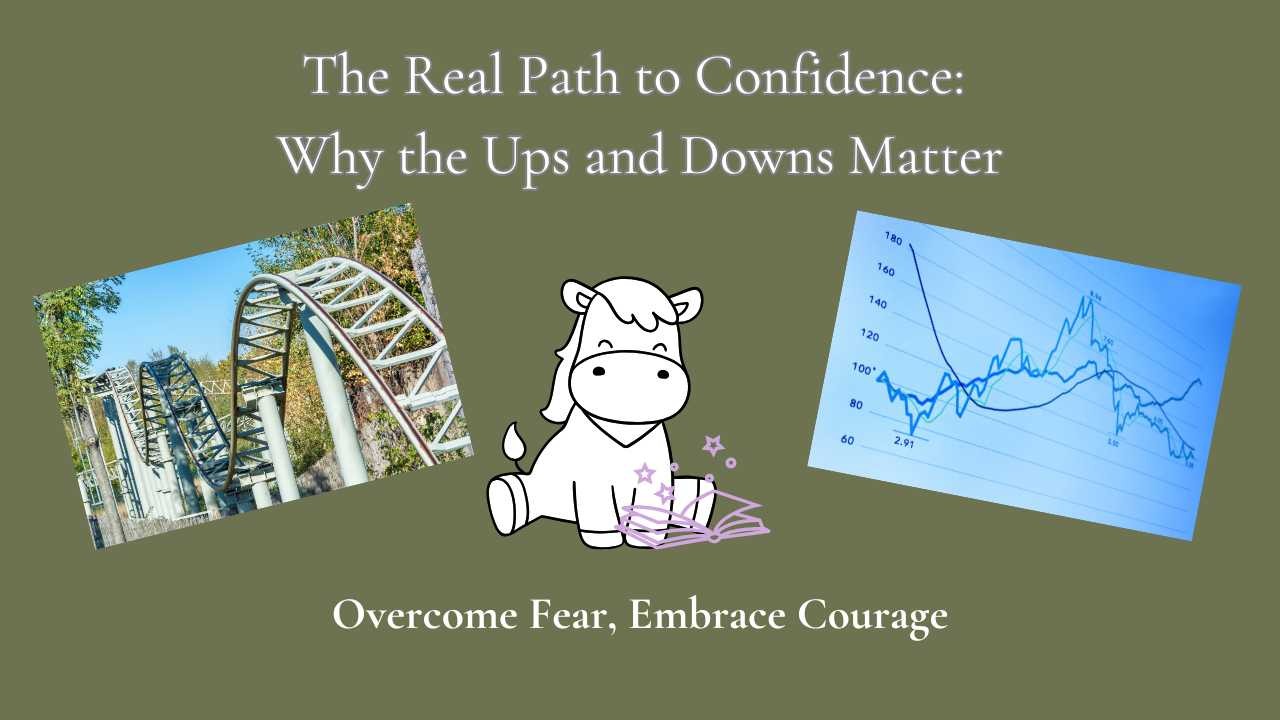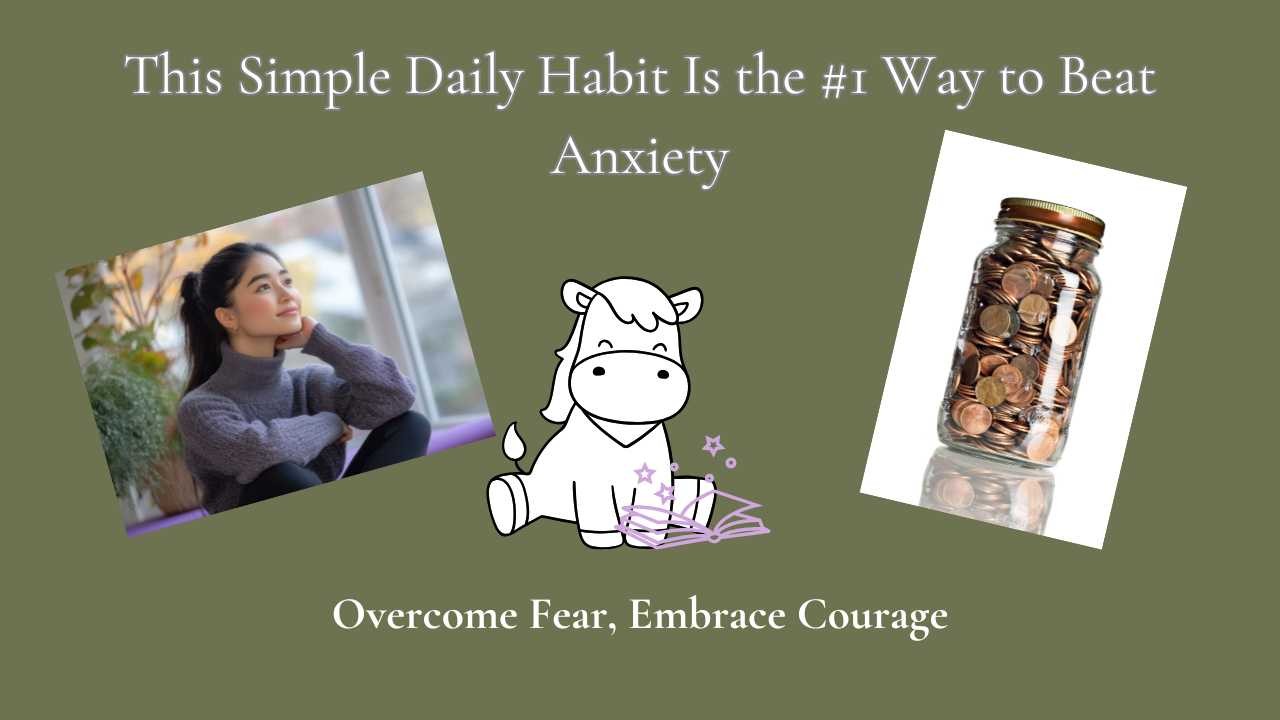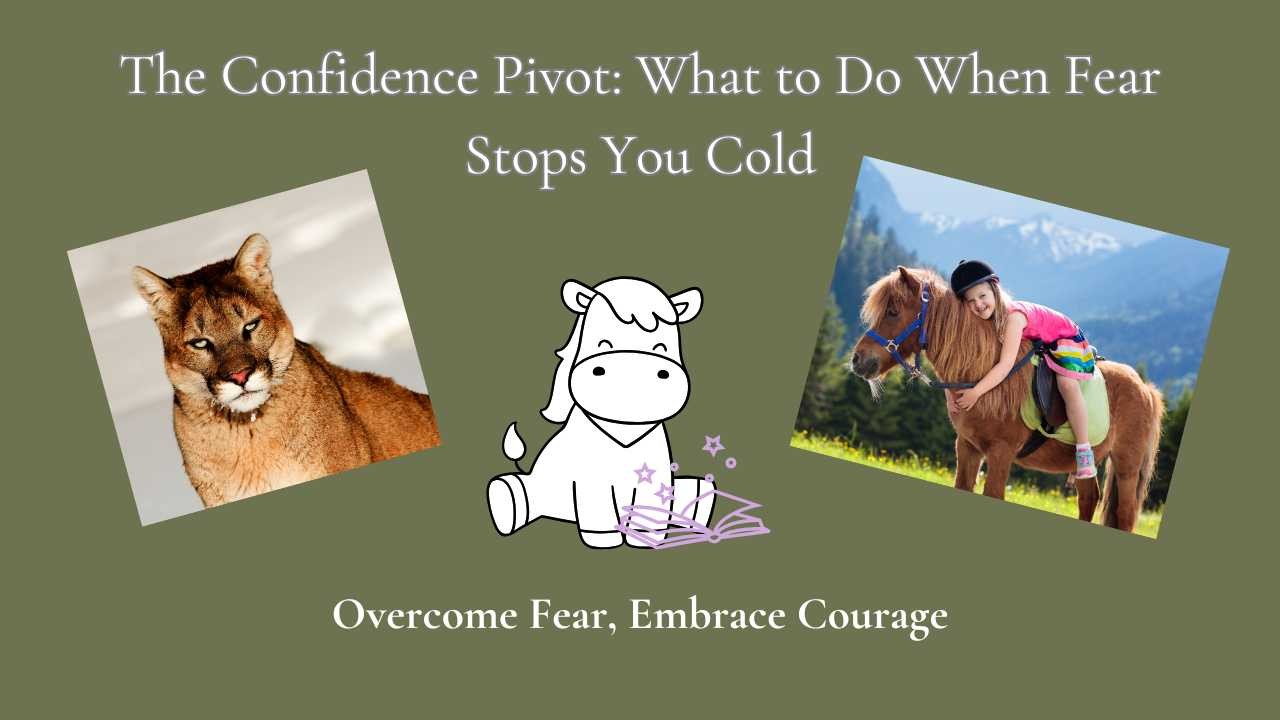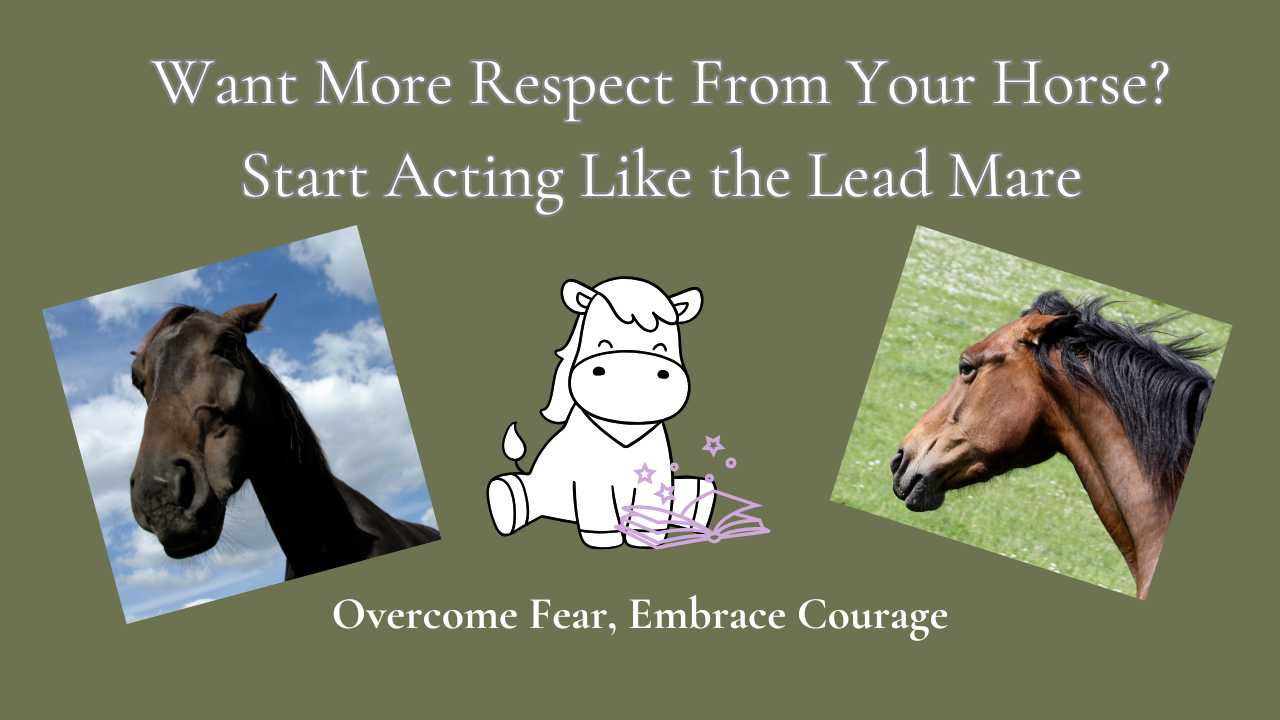
There I was, in the pasture—and I was terrified.
My off-the-track mare was aggressive, and I was timid.
The worst combination for horses and humans.
My off-the-track mare was aggressive, and I was timid.
The worst combination for horses and humans.
She bit me square in the back when I didn’t even know she was behind me.
She kicked another horse—who landed on me—twice.
She even bit my arm and tore the sleeve of my hoodie.
She kicked another horse—who landed on me—twice.
She even bit my arm and tore the sleeve of my hoodie.
I felt hopeless.
We had a vacation planned and some neighbor kids coming to care for the horses.
Something had to change—and fast.
Something had to change—and fast.
If you're feeling timid around your horse, or unaware of what's happening around you, here’s the truth:
You can’t afford to stay in that place.
But you can become the Lead Mare.
Step 1: Become the Lead Mare in Your Mind
Start with your energy. Think about the traits of a true Lead Mare:
- Calm
- Confident
- Strong presence
- Clear communication
- Mindfulness in the moment
She doesn’t shrink back. She knows what’s happening in her herd.
You can start with just one of these traits—practice it daily.
Or fill up with all of them at once. Walk taller. Speak with clarity.
Lead from within.
Or fill up with all of them at once. Walk taller. Speak with clarity.
Lead from within.
Step 2: Find Your "Ears, Tail, and Kick"—aka the Flag
Unlike horses, we don’t have ears to pin, tails to swish, or hooves to kick.
But we do have tools.
But we do have tools.
My favorite? A dressage whip with a plastic bag or flag on the end.
They became my body, my ears, my tail swish, and my kick—all in one.
They became my body, my ears, my tail swish, and my kick—all in one.
But here's the trick:
- Keep the flag down by your feet.
- Use your energy first.
- If that doesn't work, lift the flag just a little (like pinning ears).
- If still no response, wave it like a tail swish.
- Still nothing? WAVE IT MADLY like you mean it.
Exactly what a lead mare would do.
Step 3: Set Bigger Boundaries Than You Think You Need
This was the hardest—and most crucial—part for me.
At first, I had to be overly assertive to stay safe.
My boundary? A solid 50 feet.
If my mare even looked at me sideways, I waved that flag hard until she relaxed or turned away.
My boundary? A solid 50 feet.
If my mare even looked at me sideways, I waved that flag hard until she relaxed or turned away.
And the moment she did, I dropped the flag. Instant reward.
Over time, I allowed her closer—but only when she earned it with calm, respectful energy.
Over time, I allowed her closer—but only when she earned it with calm, respectful energy.
The wild part?
Once I became her clear, confident leader, she became kinder to the other horses too.
Once I became her clear, confident leader, she became kinder to the other horses too.
Final Thought:
We’re all guilty of trying to be nice… of not wanting to hurt our horse’s feelings.
But here’s the deal:
Wimpy energy creates dangerous horses.
Wimpy energy creates dangerous horses.
Don’t apologize for setting clear boundaries.
Don’t second-guess your strength.
Stand in your power, be clear, be fair—and lead like the mare you are.
Don’t second-guess your strength.
Stand in your power, be clear, be fair—and lead like the mare you are.
Want help stepping into your lead mare energy—and finding your calm?
Do you want to overcome anxiety with a little extra help?
Let’s explore breaking free from anxiety and stepping into calm, confident leadership—both in and out of the pasture.
Let’s explore breaking free from anxiety and stepping into calm, confident leadership—both in and out of the pasture.
I’ve helped clients with both courage coaching and hypnotherapy to overcome anxiety and enjoy life (and horses!) again.
Schedule your free Courage Chat now and take the first step toward finding your calm:
Courage Chat!
Courage Chat!

When I was getting back into trail riding, I pictured myself out there for an hour with friends, laughing and exploring the trails. But honestly? That vision felt like a giant elephant in the room—too big, too overwhelming. Just thinking about it made my anxiety spike. I wasn’t ready for the whole ride, and those big thoughts kept me stuck in place instead of inching forward.
Here’s the truth: momentum doesn’t come from huge leaps—it comes from tiny, doable shifts that stack up over time. Here are a few momentum hacks that can lead to BIG wins:
1. Break it down like a recipe.
If your goal is trail riding with friends, think of it like baking a cake. You don’t just say “cake” and expect it to appear—you gather ingredients, follow steps, and check the oven. The same goes for your riding goal. Gather your safety gear. Practice mounting and dismounting. Make sure you and your horse are confident at the walk, trot, and canter before you hit the trail. Use short rides to check where you’re at and fill in any gaps. These small steps build the confidence—and momentum—you need to get there.
2. Repeat until it's second nature.
Repetition is your secret weapon. The more you mount, ride, and dismount, the more effortless it becomes. You’ll uncover and fix the little things that might trip you up on the trail. By the time you're ready to go, your body (and your horse) will know exactly what to do.
3. Prepare for the "what ifs."
One small but powerful shift? Contingency planning. Many riders skip this step—and it’s a confidence killer. I had a fear of rearing, so I studied what others do, visualized it, and practiced my plan in a safe, controlled setting. I did the same with spooking, bucking, and bolting. This kind of mental prep builds trust in yourself and your horse—and keeps your momentum rolling forward.
One small but powerful shift? Contingency planning. Many riders skip this step—and it’s a confidence killer. I had a fear of rearing, so I studied what others do, visualized it, and practiced my plan in a safe, controlled setting. I did the same with spooking, bucking, and bolting. This kind of mental prep builds trust in yourself and your horse—and keeps your momentum rolling forward.
Small steps. Big wins. That’s how we ride forward—one shift at a time.
Here is a link to grab my Contingency Guide and catch up on what has worked for me! Contingency GUIDE!!!!
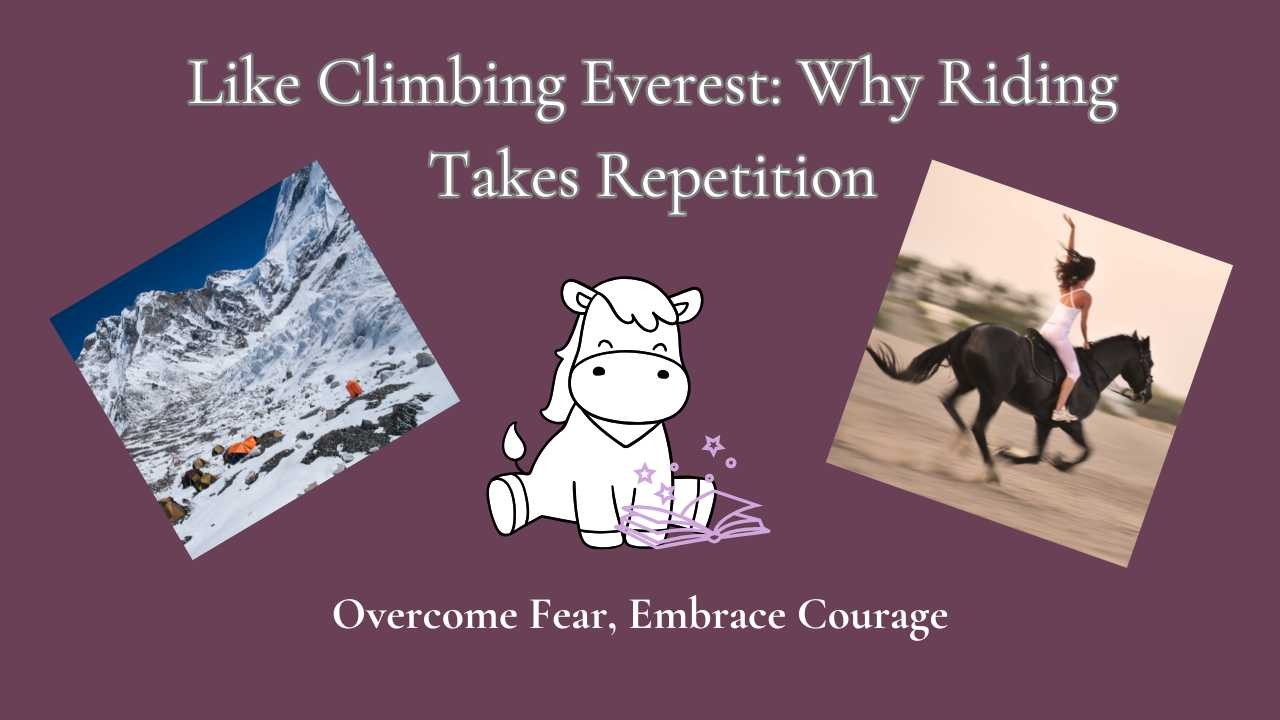
You might be surprised to learn that when climbing Everest, the journey doesn’t go straight from base camp to the summit. In fact, climbers make trip after trip between camps—climbing up, then coming back down—just to acclimate. It’s not wasted time. It’s the only way to build the strength and endurance needed to reach the top.
The same principle applies to anything worth doing—especially when you’re working toward courage, confidence, and change in the saddle.
Take the first step. Then take that step again. Then take the second step. And the first and second and third—again and again. With each repetition, you build confidence, courage, and the muscle memory that brings you back to joy in riding.
What does it really mean to move forward—even when it feels like you’re backtracking or stuck on repeat? Growth isn’t linear. It’s layered. It’s sweaty, shaky, sometimes frustrating work that gets a little easier every time you show up. And let’s be real—it’s so much better than practicing sitting on the couch. Be proud of yourself for every step you take.
Whether you’re rebuilding confidence in the saddle, launching a business, or healing from a setback, your mountain might feel impossibly steep. But every step brings you closer to your own summit. And it’s okay if it doesn’t look perfect. Perfect isn’t the goal. Finding your joy is.
This is your reminder that your courage muscle strengthens every time you push past fear—even just a little. One courageous step, repeated again and again, is how you acclimate to your next level of courage.
So here’s to the climbs, the plateaus, and the moments you think about turning back—but don’t.
Because you’re not just taking steps.
You’re becoming the version of you who doesn’t stop.
Want to hear more about taking that very first step? Tune into the 100th episode of Turn Riding Fear Around: Episode 100 - READY - FIRE - AIM—and enjoy a special offer to celebrate 100 episodes!
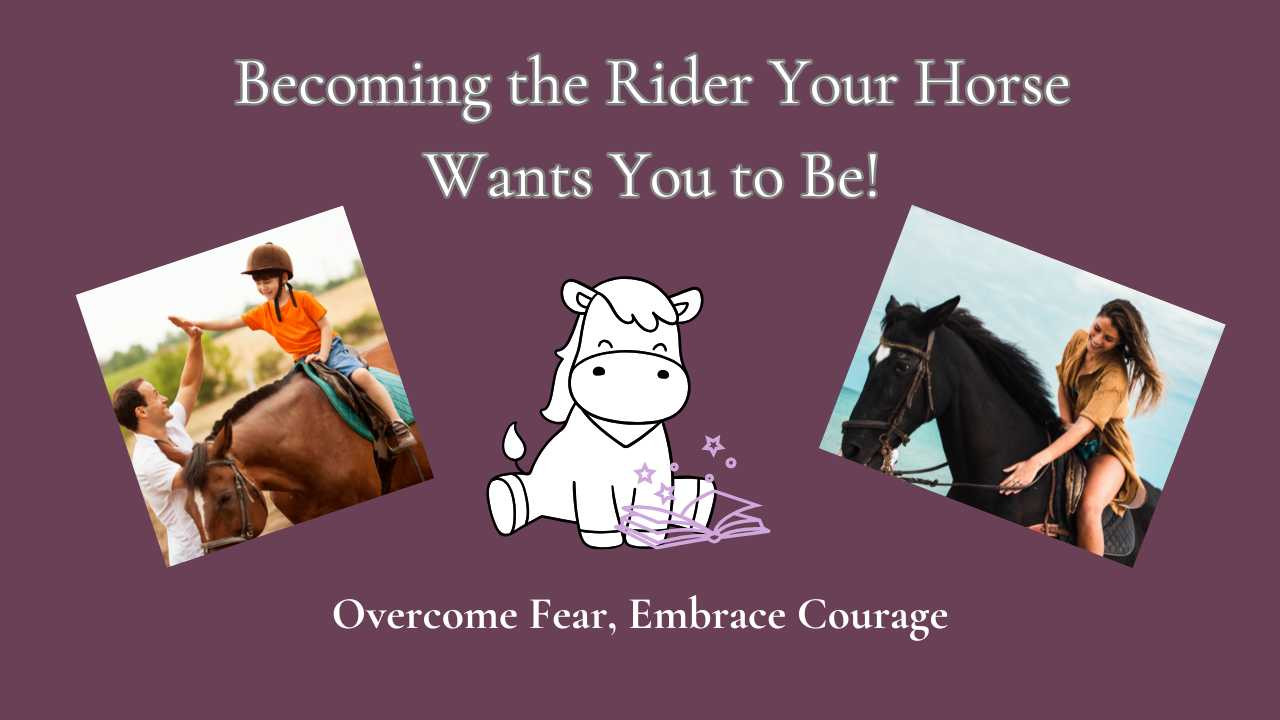
Be the Rider Your Horse Wants You to Be
Yesterday is gone. It can’t be redone.
Tomorrow isn’t here yet—and worry is wasted energy.
Today, right now, is where the magic happens.
Tomorrow isn’t here yet—and worry is wasted energy.
Today, right now, is where the magic happens.
One of the hardest lessons on my journey to courage was learning how to simply be me, right now, in this moment. I could feel that my horse wasn’t asking for perfection—they just wanted me present. Once I embraced that, the world opened up for us to ride.
By being grounded in the now, I could sense if my horse was tense. I could catch when my own anxiety was starting to run away with me. What helped the most was leaning into the days when I felt confident and my horse felt quiet.
Those were the days I rode.
Here are a few simple ways to be the rider your horse wants today:
- Show up as you are—no pressure to be anything more or different, your horse will know.
- Feel your emotions, all of them, good and bad, instead of fighting them.
- Observe your horse without judgment.
Today might look different than yesterday—and that’s okay. There’s nothing wrong with things shifting.
You might be rebuilding trust, confidence, or connection. That journey can have ups and downs.
You might be rebuilding trust, confidence, or connection. That journey can have ups and downs.
You are not behind. You are not broken. You are capable.
You are a rider—right here, right now—doing your best.
And the beautiful part?
Riding the horse you have today, and being the rider you truly are in this moment, sets the foundation for the confident rider you’re becoming.
Riding the horse you have today, and being the rider you truly are in this moment, sets the foundation for the confident rider you’re becoming.
So take a breath.
Feel your seat in the saddle.
And meet yourself—and your horse—with compassion.
Feel your seat in the saddle.
And meet yourself—and your horse—with compassion.
This moment is enough.
And so are you.
And so are you.
If you want to really be prepared to be the rider you are today, The Ultimate Rider Contingency
Guide gives you
clear, actionable steps so you know exactly how to handle the unexpected. Don’t
leave your confidence up to chance, grab your Ultimate Rider Contingency Guide
here: Contingency Guide
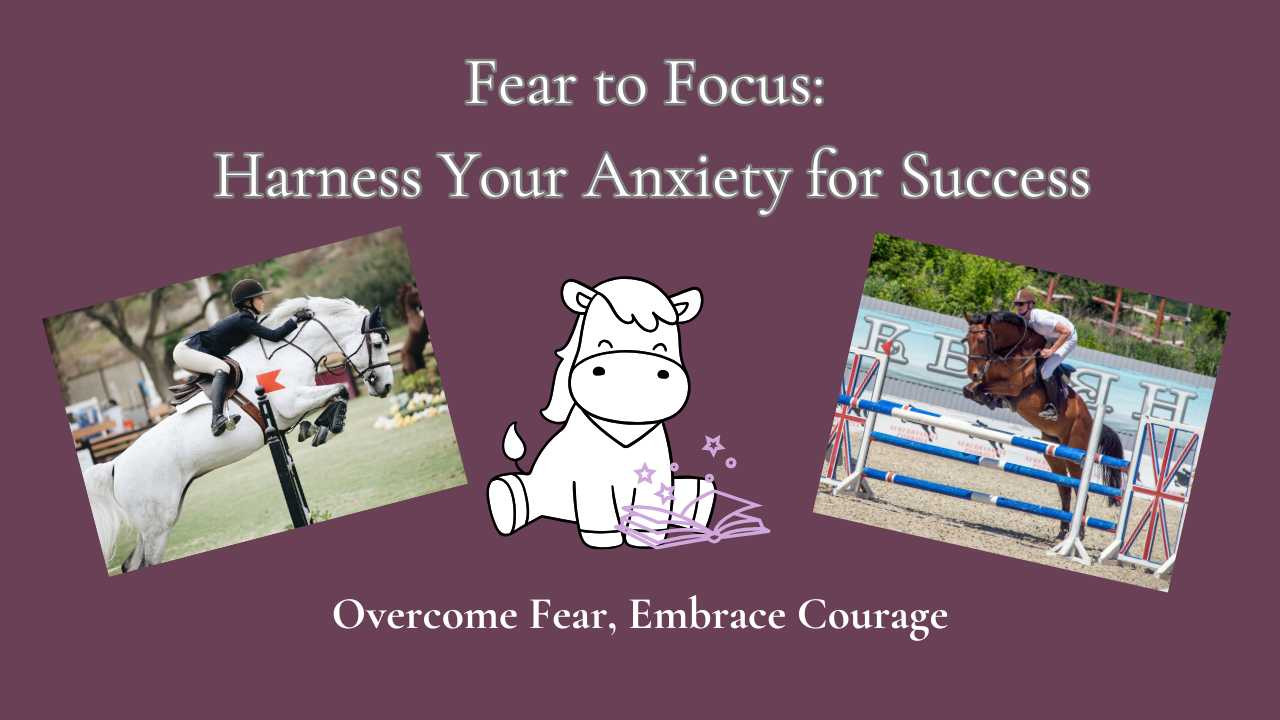
Fear Isn’t the Enemy—It’s Fuel
(You just gotta learn how to drive the fear!)
(You just gotta learn how to drive the fear!)
Alright, real talk: fear gets a bad rap. We act like it’s this emotional gremlin that’s out to ruin our lives—make us freeze, take flight, or freak the heck out. But guess what? Fear isn’t out to wreck you. It’s actually trying to help you. It’s just...not super subtle about it.
The trick isn’t to get rid of fear.
The trick is to reframe it.
Think of it like a scared horse—powerful, unpredictable, and unsure at first. But with the right focus and our steady support? That horse finds its courage and confidence, no matter the situation.
And guess what? We can do that for ourselves, too.
Think of it like a scared horse—powerful, unpredictable, and unsure at first. But with the right focus and our steady support? That horse finds its courage and confidence, no matter the situation.
And guess what? We can do that for ourselves, too.
So, first up: Reframe. That jittery feeling in your chest? Not weakness. Not failure. That’s your body saying, “Something big is happening—pay attention.” Turn fear from a stop sign into a spotlight. It’s not blocking you. It’s guiding you.
Next: Regulate. Take a breath. No seriously—breathe. Your brain can’t make brave decisions when it thinks you're being chased by a bear. Fear needs a leader, not a meltdown. You’re the rider here. Grab the reins and steer. It is great practice for being a leader for our horses too!
And finally: Redirect. Use that fear energy to move. Speak the truth. Ask the question. Take the leap. Saddle up and ride toward what truly matters—because when fear meets purpose? That’s when you stop panicking and start focusing on what brings you joy!
So here’s a tip from your slightly silly (ok, I admit it, majorly silly) courage coach:
Stop wasting energy fighting fear or letting it hold you back. Harness it. Use it. Let it guide you into courage. Because fear + focus = unstoppable you.
Stop wasting energy fighting fear or letting it hold you back. Harness it. Use it. Let it guide you into courage. Because fear + focus = unstoppable you.
If you want to hear a bit more, check out my latest podcast: Transform Fear into Focus
